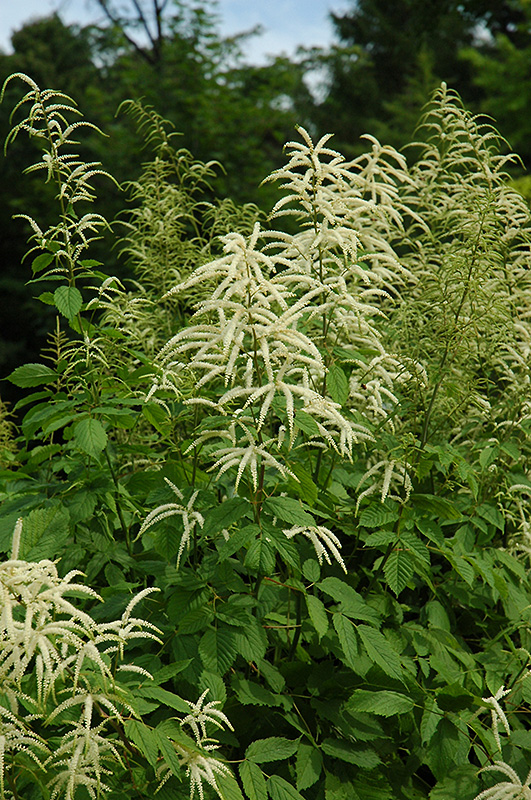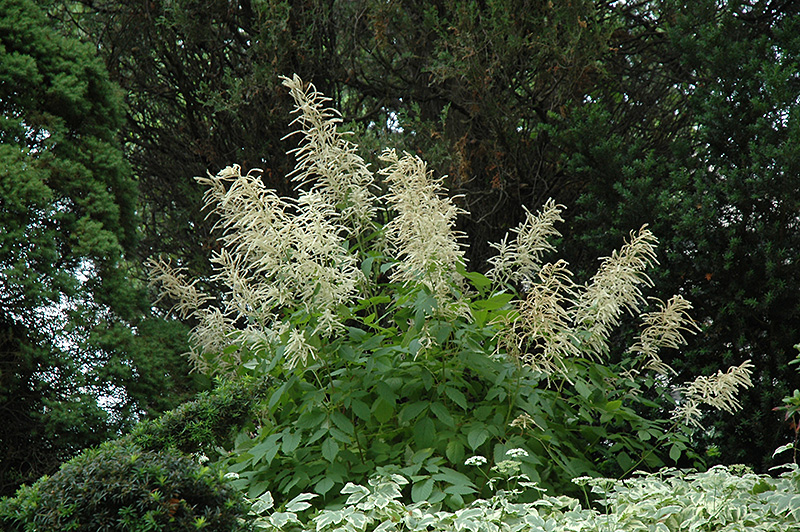Height: 4 feet
Spread: 3 feet
Sunlight:
![]()
Hardiness Zone: 2
Other Names: Goat's Beard
Description:
A mounded selection that features creamy white blooms that rise above green, ferny foliage in the late spring; preferring partly sunny areas, this variety is perfect for borders, containers or garden beds; low maintenance and easy to grow
Ornamental Features
Goatsbeard features showy spikes of creamy white flowers at the ends of the stems from late spring to mid summer. The flowers are excellent for cutting. Its pointy compound leaves remain emerald green in color throughout the season.
Landscape Attributes
Goatsbeard is a dense herbaceous perennial with a mounded form. Its medium texture blends into the garden, but can always be balanced by a couple of finer or coarser plants for an effective composition.
This is a relatively low maintenance plant, and is best cleaned up in early spring before it resumes active growth for the season. Deer don't particularly care for this plant and will usually leave it alone in favor of tastier treats. It has no significant negative characteristics.
Goatsbeard is recommended for the following landscape applications;
- Mass Planting
- Hedges/Screening
- General Garden Use
- Groundcover
- Bog Gardens
Planting & Growing
Goatsbeard will grow to be about 4 feet tall at maturity, with a spread of 3 feet. It grows at a medium rate, and under ideal conditions can be expected to live for approximately 15 years. As an herbaceous perennial, this plant will usually die back to the crown each winter, and will regrow from the base each spring. Be careful not to disturb the crown in late winter when it may not be readily seen!
This plant should be grown in a location with partial shade or which is shaded from the hot afternoon sun. It is quite adaptable, prefering to grow in average to wet conditions, and will even tolerate some standing water. It is not particular as to soil type or pH. It is somewhat tolerant of urban pollution. Consider applying a thick mulch around the root zone over the growing season to conserve soil moisture. This species is not originally from North America.
Disclaimer - This Plant Finder tool is an online resource representing many of the varieties that we carry over the course of the season, and is intended for informational purposes only. Inventory varies seasonally, so we cannot guarantee that every plant will be in stock at all times - please contact the store directly for current availability. It does not include our entire selection of plants, so be sure to visit our store to see varieties that may not be represented on this list.


